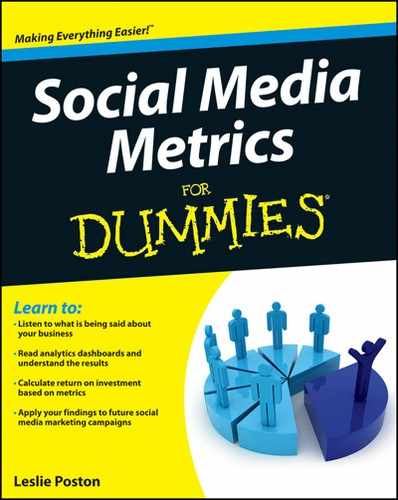Knowing What to Do with Outliers
An outlier is any data point that doesn’t fit into your established average data pattern. By paying attention to your outliers, you can see where to position yourself by focusing on which outliers are repeating data and which ones start to multiply, indicating a trend.
There are two types of outliers in data:
![]() Outliers caused by errors in measurement or data.
Outliers caused by errors in measurement or data.
![]() Outliers caused by the first indicator of long-tail changes in your measurement sets. (Long-tail is a marketing term referring to results shown over time.)
Outliers caused by the first indicator of long-tail changes in your measurement sets. (Long-tail is a marketing term referring to results shown over time.)
Outliers caused by errors
To deal with the first type of outlier (an error that you want to eliminate before it corrupts your data), you need to eliminate it. Eliminating the outlier requires several steps, the first of which is exporting your data to a spreadsheet:
1. Sort your spreadsheet data by ascending order.
2. Locate your median number.
The median number of 3 and 4, for example, is 3.5.
3. Find the point at which 25 percent of the metrics in your spreadsheet are larger.
This is called the upper quartile, or Q2.
4. Find the point at which 25 percent of the metrics in your spreadsheet are smaller.
This is called the lower quartile, or Q1.
5. Subtract Q1 from Q2.
The result is the interquartile range. You need this range to exclude the bad data.
6. Multiply the IQ (interquartile range) by 1.5.
7. Add the results of Step 6 to the upper quartile and then subtract it from the lower quartile.
This step sets parameters.
8. Mark any data outside this set of parameters as an outlier.
9. Multiply the IQ by 3.
10. Take the results of Step 9 and add it to the upper quartile and subtract it from the lower quartile.
The resulting number qualifies as an extreme outlier.
Outliers caused by the first indicator of long-tail changes in your measurement sets
If you’re experiencing the second type of outlier (the first indicator of a long-tail change), then you need to track it and create more metrics to figure out what it means to your brand and business model.
Instead of eliminating the data, you want to sort it into its own data set so that you can track it over time. This sorting lets you compare the data outliers to your business model and goals to see whether it’s an increasing metric.
If you find that the metric is gathering steam, so to speak, then you know it’s a future trend emerging and you can turn your future focus toward it and grow your business in a new direction.

